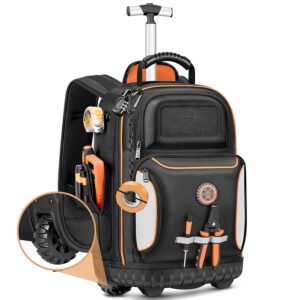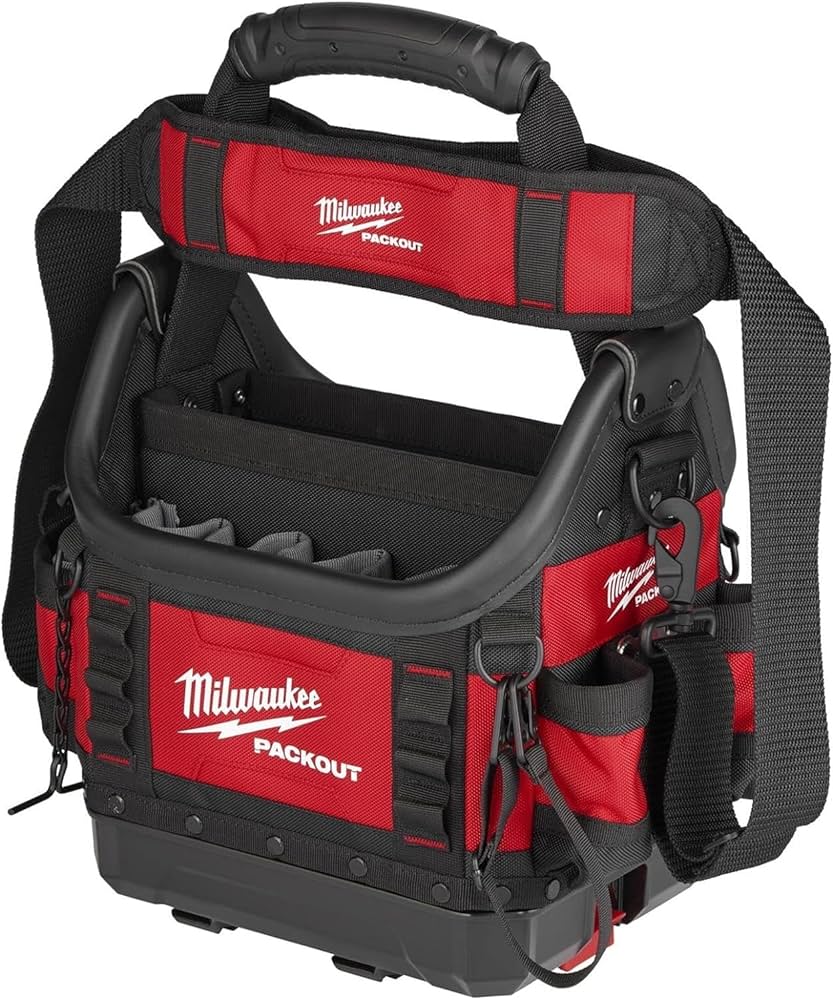
The Milwaukee Packout 10″ Structured Tote. This tool bag is top of the line for Visibility. It features several slots to keep tools standing up which makes it easy to organize.
A tool bag is more than just a container for your equipment. It’s an essential companion for both professionals and DIY enthusiasts. The right tool bag keeps your instruments organized, protected, and easily accessible when you need them most.
Tool bags come in various shapes, sizes, and materials to suit different needs. Some feature multiple compartments and pockets, while others offer waterproof protection or reinforced bottoms. The best option depends on your specific requirements and the types of tools you regularly use.
Investing in a quality tool bag can save you time and frustration. No more digging through piles of tools or worrying about damage during transport. Whether you’re a professional tradesperson or weekend warrior, a well-chosen tool bag makes every job easier.
Key Takeaways
- A high-quality tool bag provides organization, protection, and easy access to your equipment.
- Tool bags are available in various styles with features like multiple compartments, waterproof materials, and reinforced bottoms.
- Regular maintenance and proper storage extend the life of both your tool bag and the tools inside it.
What Is a Tool Bag?
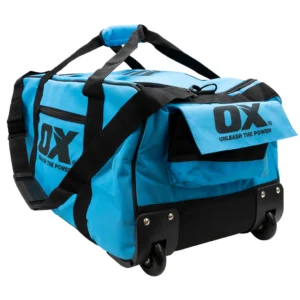
Tool bags provide an efficient way to store, organize, and transport tools. They combine durability with convenience for both professionals and DIY enthusiasts.
The Ox Tool Bag Pro Series 24-inch rolling tool bag with built-in wheels
Definition and Purpose
A tool bag is a portable container designed specifically for carrying tools and equipment. Made from sturdy materials like canvas, nylon, or leather, these bags withstand the rigors of daily use in various work environments.
The primary purpose of a tool bag is to keep tools organized and accessible. Most feature multiple pockets, compartments, and loops to hold different types of tools securely. This organization helps workers find what they need quickly without digging through a jumbled mess.
Tool bags also protect tools from damage and exposure to elements. Many include padded sections for delicate equipment and water-resistant materials to shield contents from moisture. For professionals who travel between job sites, tool bags offer an easy way to transport essential equipment.
Types of Tool Bags
Several types of tool bags exist to meet different needs and preferences:
Open-top bags feature a wide mouth opening for easy access to tools. They typically have a reinforced bottom and numerous pockets along the sides.
Backpack tool bags distribute weight evenly across both shoulders, making them ideal for technicians who climb or walk long distances.
Rolling tool bags include wheels and extendable handles, perfect for heavier collections of tools or those with back problems.
Specialty tool bags are designed for specific trades:
- Electrician bags with insulated pockets
- Plumber bags with waterproof compartments
- HVAC technician bags with space for gauges and meters
The size of tool bags ranges from small pouches for basic home repairs to large professional models for complete tool collections.
Tool Bag vs. Tool Box
Tool bags and tool boxes serve similar purposes but differ in several key ways:
| Feature | Tool Bags | Tool Boxes |
|---|---|---|
| Material | Fabric (canvas, nylon) | Hard plastic or metal |
| Weight | Lightweight | Heavier |
| Flexibility | Can be compressedWhen not full | Rigid structure |
| Organization | Multiple pockets and pouches | Trays and compartments |
| Carrying | Handles, shoulder straps | Handle on top |
Tool bags offer better portability and often weigh less than tool boxes. They conform to irregular spaces and can be easier to transport up ladders or into tight spaces.
Tool boxes provide better protection for tools against crushing or impact damage. They also tend to offer better organization for smaller items through built-in dividers and trays.
Many professionals use both: tool bags for daily carry and tool boxes for storage or specialized equipment.
Key Features of High-Quality Tool Bags
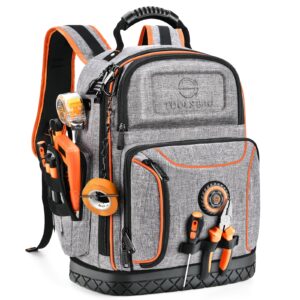
A well-designed tool bag combines practical functionality with durability to protect and organize valuable equipment. The right features make all the difference in efficiency and convenience on any job site. Both professionals and DIY enthusiasts
Exterior Pockets and Storage Options
Tool bags with multiple exterior pockets offer easy access to frequently used items without opening the main compartment. Most professional-grade bags feature 10-20 pockets of varying sizes to accommodate different tools. These pockets are strategically placed around the perimeter for balanced weight distribution.
Some models include:
- Specialized slots for screwdrivers and wrenches
- Loop holders for tape measures or hammers
- Transparent pockets for small parts visibility
- Magnetic patches to prevent small metal items from getting lost
The best designs ensure every tool has a dedicated space. This organization reduces time spent searching for tools and increases productivity on job sites. Exterior storage also helps distribute weight more evenly throughout the bag.
Material Types and Durability
High-quality tool bags are constructed from robust materials that withstand harsh conditions. Canvas remains popular for its natural strength and breathability, while ballistic nylon offers superior tear resistance. Many professional bags use 600-1200 denier fabric, indicating thickness and durability.
Common materials include:
- Heavy-duty canvas (traditional but effective)
- Ballistic nylon (exceptional tear resistance)
- Polyester with PVC backing (water-resistant properties)
- Leather reinforcements (for high-wear areas)
Water-resistant coatings protect tools from moisture damage. Reinforced bottoms prevent wear from rough surfaces and heavy loads. Double-stitched seams and metal rivets at stress points significantly extend a bag’s lifespan.
Secure Storage Systems
Internal organization systems keep tools protected during transport. Padded compartments shield delicate electronic equipment from impacts. Many high-end bags feature modular dividers that can be rearranged to accommodate specific tool collections.
Secure storage innovations include:
- Molded tool organizer sections for a perfect fit
- Padded pockets for electronic testing equipment
- Elastic straps to keep items from shifting
- Waterproof compartments for protection from spills
Quality tool bags incorporate reliable closure systems. Heavy-duty zippers with large pulls work even with gloved hands. Some models offer lockable compartments for expensive specialty tools. The best designs balance security with quick access to keep work flowing efficiently.
Popular Types of Tool Bags
Tool bags come in various designs to meet different needs and working conditions. Each type offers unique features that make organizing and carrying tools more convenient for specific situations. The Rolling Electrician Tool Bag is a great example of this.
Rolling Tool Bags
Rolling tool bags combine storage capacity with mobility, making them ideal for professionals who work with heavier tools. These bags feature sturdy wheels and telescoping handles similar to luggage. The wheel design varies from small casters to larger, rugged wheels that can handle rough terrain at construction sites.
Most rolling tool bags include multiple compartments and pockets for organized storage. The interior typically offers dividers or pouches to keep tools separated and accessible. Some models feature a wide-mouth opening that stays open while you work.
Weight capacity is an important consideration, with professional-grade rolling bags supporting up to 100 pounds of tools. Many include reinforced bases and frames to prevent sagging even when fully loaded.
Canvas Bags
Canvas tool bags remain popular for their durability and classic appeal. Made from heavy-duty woven cotton, these bags withstand daily wear and tear while maintaining their shape over time.
The natural cotton material makes canvas bags breathable, which helps prevent moisture buildup that can damage tools. Most canvas options feature reinforced stitching at stress points and often include leather or synthetic trim for additional strength.
Organization in canvas bags typically comes from multiple interior and exterior pockets. Open-top designs allow quick access to frequently used tools, while others offer zippered closures for security.
Canvas bags are generally lightweight when empty, making them easy to carry when not fully loaded. Many professionals appreciate their eco-friendly nature compared to synthetic alternatives.
Water-Resistant Tool Bags
Water-resistant tool bags protect valuable tools from moisture and light rain. These bags typically use materials like treated nylon, polyester, or specialized coated fabrics that repel water without adding excessive weight.
The seams on water-resistant bags often feature special taping or sealed construction to prevent water from seeping through stitching points. Many models include waterproof zippers or flap closures that provide additional protection against moisture.
Storage configurations in water-resistant bags vary widely, with some offering specialized waterproof compartments for electronic tools or devices. The bases usually incorporate rubber or plastic elements to keep the bag elevated from wet surfaces.
These bags prove especially valuable for outdoor work in unpredictable weather conditions or environments with high humidity or frequent spills.
Choosing the Right Tool Bag for Your Needs
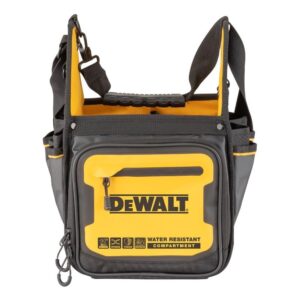
Selecting a tool bag that matches your specific requirements will make your projects more efficient and organized. The right bag balances size, durability, and organizational features to suit your particular situation.
Professional vs. DIY Use
Professional tradespeople need tool bags that can withstand daily use and harsh conditions. These bags typically feature reinforced stitching, water-resistant materials, and heavy-duty zippers or clasps. Many professional-grade tool bags include padded shoulder straps and ergonomic handles to reduce strain during transport.
DIY enthusiasts might opt for lighter, more affordable options that still provide adequate organization. Weekend warriors don’t need the same level of durability as professionals, but should still look for bags with reinforced bottoms and quality zippers.
The price difference between professional and DIY bags is substantial. Professional electricians, plumbers, and carpenters might invest $80-200 in a specialized tool bag, while DIY options typically range from $20-60.
Home Improvement and Organization
For home improvement projects, versatility is key. Look for tool bags with multiple compartments and pockets of various sizes. This allows for storing everything from tiny screws to larger power tools.
Popular home improvement tool bag features:
- External pockets for quick access to frequently used tools
- Internal dividers to separate and protect tools
- Reinforced bottom to prevent sagging and wear
- Water-resistant material to protect against spills
Wall-mounted tool organizers complement tool bags for home use. These systems allow you to hang your tool bag and access frequently used items without digging through the bag.
Consider a rolling tool bag for home use if you have back issues or need to transport heavier items around your property.
Capacity and Load Considerations
Tool bags come in various sizes, typically measured in inches or by volume capacity. Small bags (12-16 inches) are perfect for basic household repairs, while medium bags (16-20 inches) suit most DIY projects.
Weight capacity is equally important. Check the manufacturer’s specifications for maximum load ratings, usually between 30-75 pounds, depending on design and materials.
Consider these capacity factors:
- Weight of your heaviest tools
- Number of tools you typically carry
- Types of projects you commonly tackle
- Your physical ability to carry the loaded bag
Overloading a tool bag can damage its structure and make it difficult to find specific tools. Some professionals use multiple specialized bags rather than one oversized bag to maintain organization and prevent excessive weight.
Tool Bag Maintenance and Care
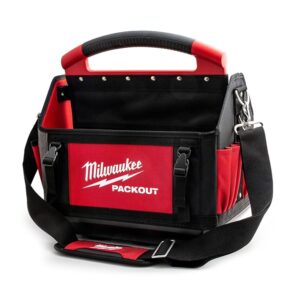
Proper maintenance extends the life of your tool bag and ensures it remains functional when you need it most. Regular cleaning and correct storage help preserve the material and keep your tools organized.
Cleaning Tips
Tool bags collect dirt, grease, and debris during normal use. For fabric tool bags, begin with a gentle brushing to remove loose particles. Use a mild soap solution and a damp cloth for spot cleaning stubborn stains. Avoid soaking the entire bag, as this may damage structural elements.
For leather tool bags, wipe with a slightly damp cloth and use a specialized leather cleaner. Apply leather conditioner afterward to prevent cracking and maintain flexibility.
Water-resistant tool bags require special attention. Clean these with a damp cloth only and never use harsh chemicals that might damage the protective coating. Always check manufacturer guidelines before cleaning.
Metal parts like zippers and handles should be wiped clean and occasionally lubricated to prevent rust and ensure smooth operation.
Storage Best Practices
Store your tool bag in a cool, dry location away from direct sunlight to prevent material degradation. Hanging storage options keep your tool bag off potentially damp floors and help maintain its shape.
Empty your tool bag completely before long-term storage. This prevents unnecessary strain on seams and pockets from the weight of tools.
For water-resistant tool bags, ensure they’re completely dry before storage to prevent mildew growth. Apply appropriate waterproofing treatments periodically to maintain water resistance.
Consider using silica gel packets inside stored tool bags to control moisture. Replace heavy tools with rags or paper to help the bag retain its shape during extended storage periods.
Never stack heavy items on top of stored tool bags, as this can damage the structure and compromise functionality.
Shipping and Storing Tool Bags
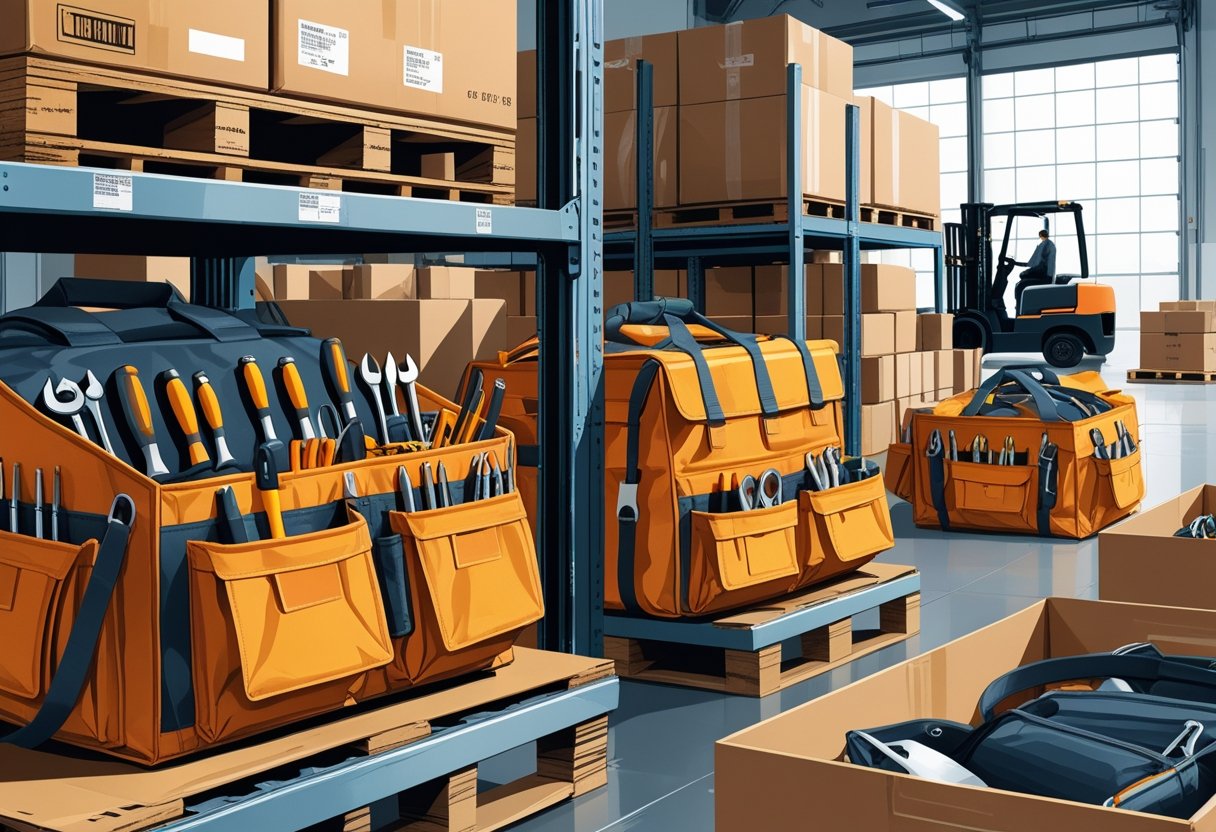
Proper shipping and storage techniques extend the life of tool bags while maintaining their functionality. These practices protect your investment and ensure your tools remain organized and accessible.
Packing for Shipping
When preparing tool bags for shipping, remove all tools first to reduce weight and prevent damage. Empty bags should be laid flat or folded according to their design specifications.
Fill any space with bubble wrap or packing paper to maintain the bag’s shape. This prevents unnecessary creasing or compression during transit.
For leather or premium tool bags, consider wrapping them in acid-free tissue paper before placing them in shipping boxes. This extra layer protects against moisture and scratches.
Choose a shipping box at least 2 inches larger than the tool bag on all sides. This allows room for protective padding.
Recommended shipping materials:
- Sturdy corrugated boxes
- Bubble wrap or kraft paper
- Packing tape (water-resistant)
- Desiccant packets for moisture protection
Label packages clearly with “Handle with Care” when shipping expensive or specialized tool bags.
Long-Term Storage Solutions
Store tool bags in climate-controlled environments whenever possible. Extreme temperatures and humidity can damage materials and compromise structural integrity.
Hang bags with reinforced handles on sturdy hooks to maintain their shape. Alternatively, stuff bags with acid-free paper to prevent creasing and collapse.
Best storage practices:
- Keep away from direct sunlight to prevent fading
- Store in breathable containers rather than sealed plastic
- Position away from heat sources and damp areas
- Use cedar blocks to deter pests without harsh chemicals
Empty and clean storage pockets before long-term storage. Residue from tools can cause corrosion or staining over time.
For canvas or fabric bags, apply appropriate protectant spray before storage. This creates a barrier against dust and moisture.
Inspect stored tool bags every few months for signs of pests or moisture damage, even in seemingly secure locations.
